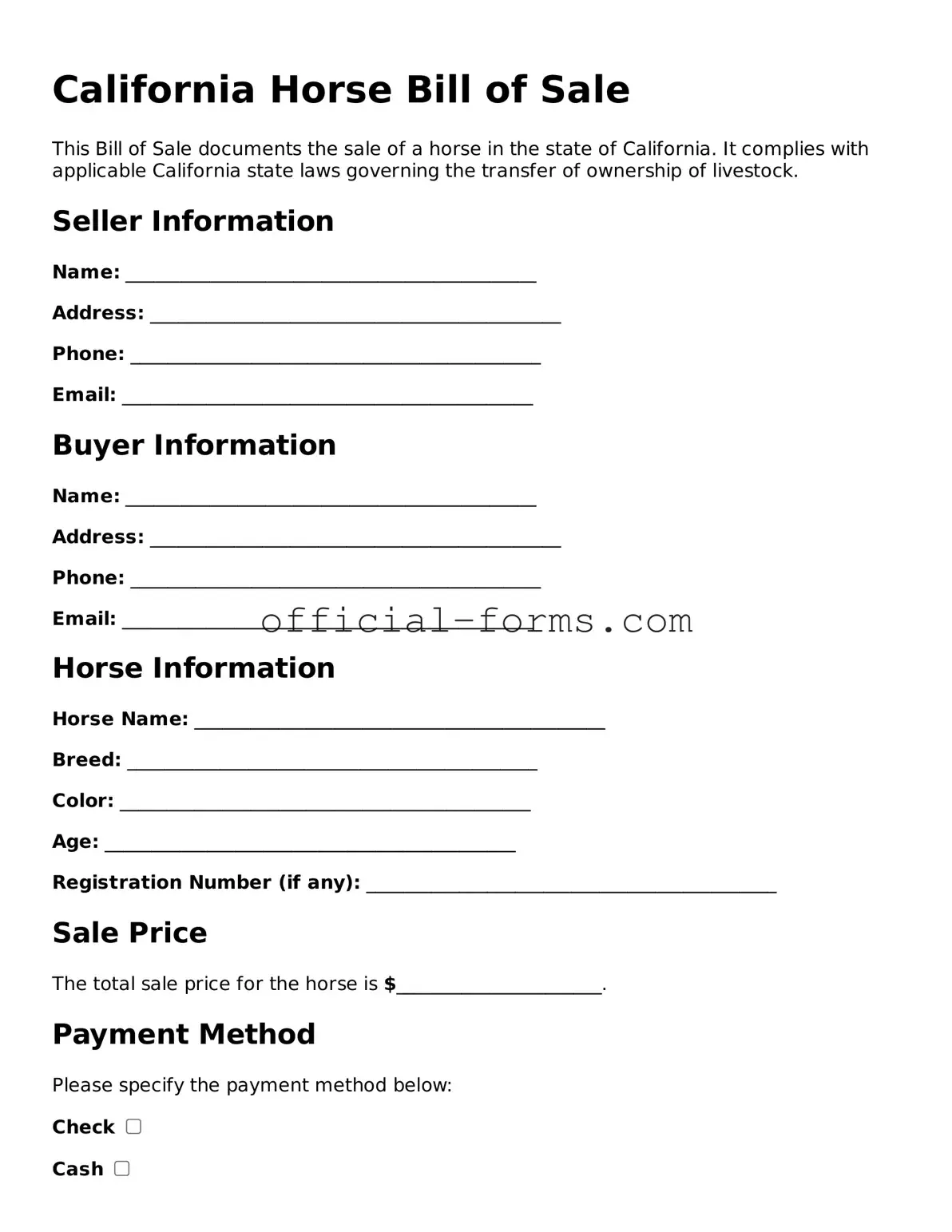Official California Horse Bill of Sale Document
The California Horse Bill of Sale form is a legal document that facilitates the transfer of ownership of a horse from one party to another. This form outlines essential details such as the horse's description, sale price, and the signatures of both the seller and buyer. Utilizing this form ensures a smooth transaction and provides protection for both parties involved.
Open My Horse Bill of Sale Now
